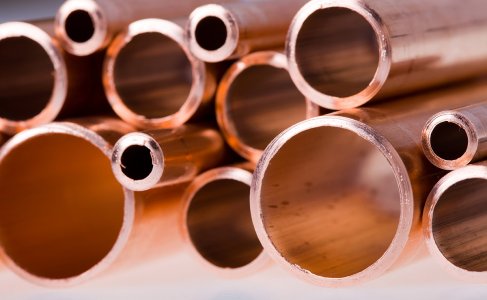Non-ferrous metals

General Characteristics
Today the industry uses dozens of non-ferrous metals. All of them differ from each other in physical properties, manufacturability and scope of application. The most common nonferrous metals are copper, aluminum and lead, which are the basis for most non-ferrous alloys. Non-ferrous metals are the best conductors. And not only that. Their advantages are numerous - resistance to corrosion, durability, flexibility, strength, wear resistance. Different types of non-ferrous metals are used in different areas, but most often - in metallurgy, construction, aviation and mechanical engineering.
Copper .
Copper is one of the most ancient metals. Many years ago copper served as the basis for making weapons and objects of labor. This element is widely found in the nature. Pure copper has a pinkish-red color, possesses high conductivity of electric current and heat, differs from other nonferrous metals with its malleability and at the same time softness, resistance to corrosion.
Bronze
The most common copper alloys are bronze and brass. Bronze consists of copper and tin, sometimes with zinc additives. Tin increases the elasticity and strength of the alloy and lowers the melting point. Bronze is easy to forge, easy to melt, filling the mold almost completely, leaving no empty pores, due to which it reduces the likelihood of cracking the product.
Brass
Brass contains only copper and zinc. This alloy is very well amenable to pressure treatment in a hot or cold state. If the zinc content is less than 15%, the alloy begins to corrode, especially when stored in a humid environment rich in sulfur or ammonia.
Dural
Contains aluminum, magnesium and copper. The aluminum content is the highest, which is why this alloy is also called duralumin. In order to increase its strength, dural is heated to 500°C and then placed in cold water. After tempering such metal is widely used in aircraft engineering to produce fuselage, rudders, fairings,
Aluminum
It is the second nonferrous metal in terms of electrical conductivity after copper. The distinctive feature of this metal is its lightness. Its surface is covered with a film of oxide. Therefore aluminium is almost not prone to corrosion which makes it the most widely used metal.
Lead
High-density lead. It is four times heavier than aluminum. At the same time, lead is easy to melt. Another important feature of this metal is that it is very volatile at high temperatures. This metal is extremely soft and easily scratched with the fingernail.
Babbitt
It is formed by combining lead and tin. This alloy is characterized by high wear resistance with a very low coefficient of friction. These properties make the babbitt-based equipment more durable and reliable in service.
Ferroalloys
These are alloys of iron with other metals or nonmetals. The composition of such alloys may be different depending on the application. For example ferroniobium, ferromolybdenum and ferrotitanium can be used as alloying agents for heat-resistant alloys and tool steels. Often the price of ferroalloys is lower than that of pure metal, as ferroalloys are usually obtained directly from ore.
Buy at best price
Evek GmbH stocks a wide range of standard and non-standard rolled metal products. Our representative offices are located. You can make a purchase without leaving your office, for example, online through the Company's website. All you need to do to buy is to place an order and click "buy" button. Today it is easy to buy non-ferrous metals both as scrap and waste. If necessary our managers can consult you on any current issues. Lead times for orders are minimal. Preferential discounts are available for bulk purchases.
